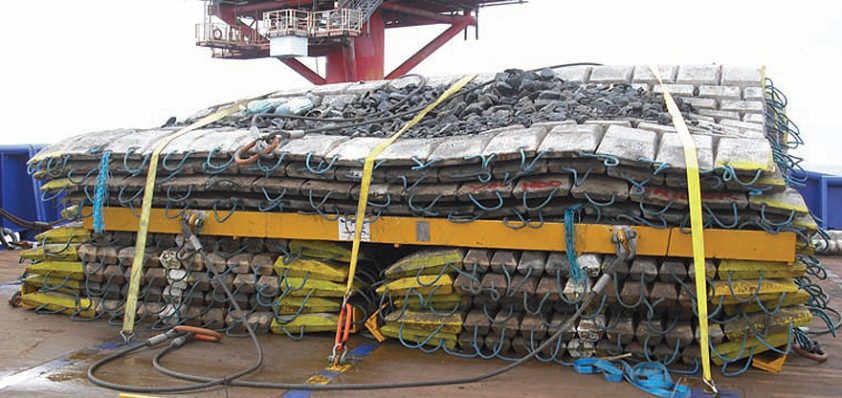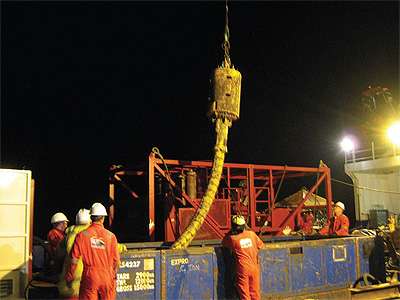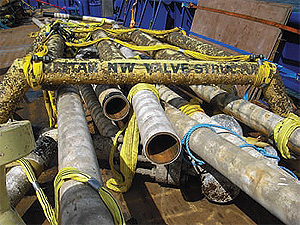
Bridge Energy
Bridging the gap
In May 2010, the individual expertise of Silverstone Energy Limited in the UK and Norway’s Bridge Energy AS were integrated under a new entity – Bridge Energy ASA.
Both companies were well established in their own markets, with Silverstone Energy having built up a strong development and operations portfolio, mainly on the UK Continental Shelf (UKCS),  since it was founded in 2005. Around the same time Bridge Energy AS was moving forward as an exploration company focused on the Norwegian market.
since it was founded in 2005. Around the same time Bridge Energy AS was moving forward as an exploration company focused on the Norwegian market.
As such, Bridge Energy ASA brings together a healthy portfolio of near-term development opportunities, primarily on the UKCS, and an exploration portfolio based around Norway. This has also brought together the two experienced teams, with minimal overlaps, to provide a fully integrated cross border oil and gas company.
In terms of the gap in the market that exists for Bridge Energy, Richard Strachan, developments manager, comments: “Opportunities exist for operators like us who have the right mix within their teams to identify and bring to market quickly, safely and efficiently the smaller prospects, which the much larger national oil companies don’t see any material value in. The remaining reserves require a new approach to development such as the use of hydraulic fracturing in tight gas reservoirs, and Bridge Energy has been at the forefront of applying this technology. In that way we are playing our part in prolonging the life of the North Sea and the supply chain, all be it in a relatively small way at present.”
Bridge Energy’s near-term focus is divided between two main business streams – a suite of three upcoming developments in the UK, and a portfolio of exploration targets ranging from the Barents Sea down to the central North Sea (CNS). The company is also continuing production from its Victoria phase 1 development, which is a single well tied back to the ConocoPhillips Viking infrastructure. This project saw Bridge Energy not only safely perform the largest fracture ever in the Southern North Sea (SNS) to date from a jack-up rig in 2008, but also place the first subsea Plexus PosiGrip wellhead connector.
This year Bridge Energy will be continuing with the development of its Victoria gas field phase 2, followed by its Vulcan East and Vulcan North West (NW) field interests. “In tandem with this we  are also partners in five exploration wells. Four are based on Norway – Mjøsa, Garantiana, Aha/Noor/Mukta/Zechst, and Geite, as well as Contender in the UK. Our target is to grow production from the around 1700 barrels of oil equivalent (boe) that we currently maintain from Victoria phase 1 and Duart, which we brought a 50 per cent interest in from Nexen, to over 12,000 boe by 2016,” reveals Richard.
are also partners in five exploration wells. Four are based on Norway – Mjøsa, Garantiana, Aha/Noor/Mukta/Zechst, and Geite, as well as Contender in the UK. Our target is to grow production from the around 1700 barrels of oil equivalent (boe) that we currently maintain from Victoria phase 1 and Duart, which we brought a 50 per cent interest in from Nexen, to over 12,000 boe by 2016,” reveals Richard.
Although a small company in terms of the market, Bridge Energy is unique for its size and age in having already undertaken a full life cycle of operations on the UKCS including exploration, appraisal, development, production, and more recently decommissioning. The project in question was the decommissioning of Bridge Energy’s Tristan North West (NW) field – a single well tied back to the Perenco operated Davy installation. In addition to this production well, the Company has to permanently abandon an earlier exploration well that had been drilled in 1987 by Mobil. This required an understanding of how the well may have been left, and the eventuality of what may have happened since its temporary abandonment 23 years earlier.
“In abandoning the field, I thought of this not as an engineering task in having to deal with the technical challenges of plugging wells and removing pipes and umbilicals from the seabed, but more as a safety and environmental project as to how we can meet our obligations as a prudent oil and gas operator. Key to this was the selection of the team, as this was a relatively new operation in the UKCS. Another important aspect was our early and continued dialogue with official consultees, the contracting community, the general public, and DECC in order to decide upon the overall best solution,” says Richard.
“To this end we undertook an assessment of all of the various options for decommissioning the field from complete removal of everything to leaving everything in situ, and weighted these from a technical and environmental perspective. The conclusion we came to was the permanent plugging and abandonment of both wells with the removal of the well heads, some sections of pipe and control umbilical at the well end, and the Davy end as well. The main trenched and buried pipe and umbilical between the two ends was opted to be left in situ. As with all of our operations we created specific HSEQ goals and objectives for the project, all of which were attained, including the 100 per cent sale or reuse of all items returned to shore, which exceeded our initial target of 95 per cent,” he enthuses.
With Bridge Energy having recently set in place two new credit agreements, the company is well placed to deliver on its near term business plan to grow production to around sevenfold in the next five years through the development of Victoria phase 2, Vulcan East and Vulcan NW. As well as its five exploration targets for this year, Bridge Energy already have a further four in place for 2013, and intend to identify through this programme tangible development targets to grow the business even further.
Bridge Energy
Services: Exploration and production